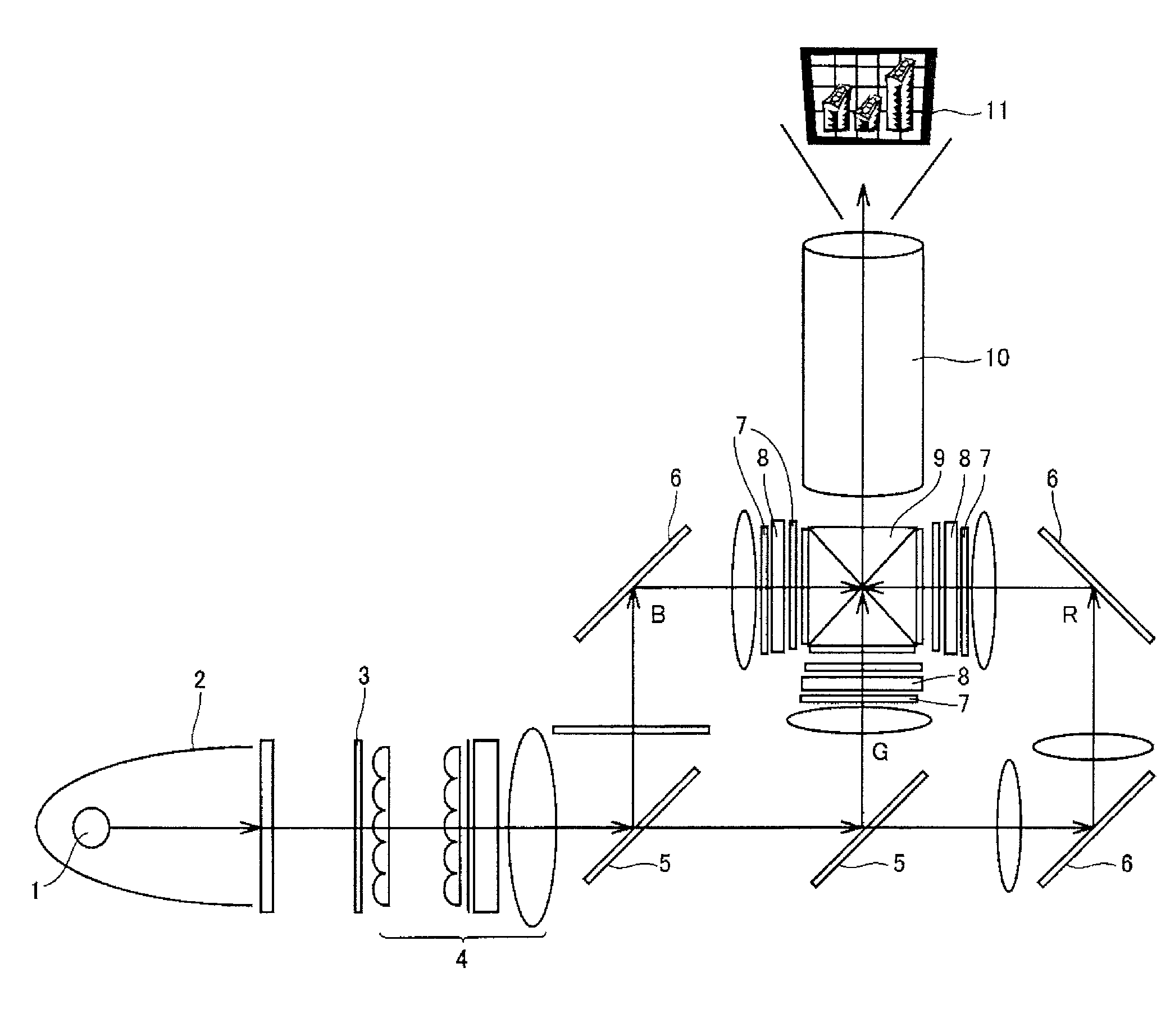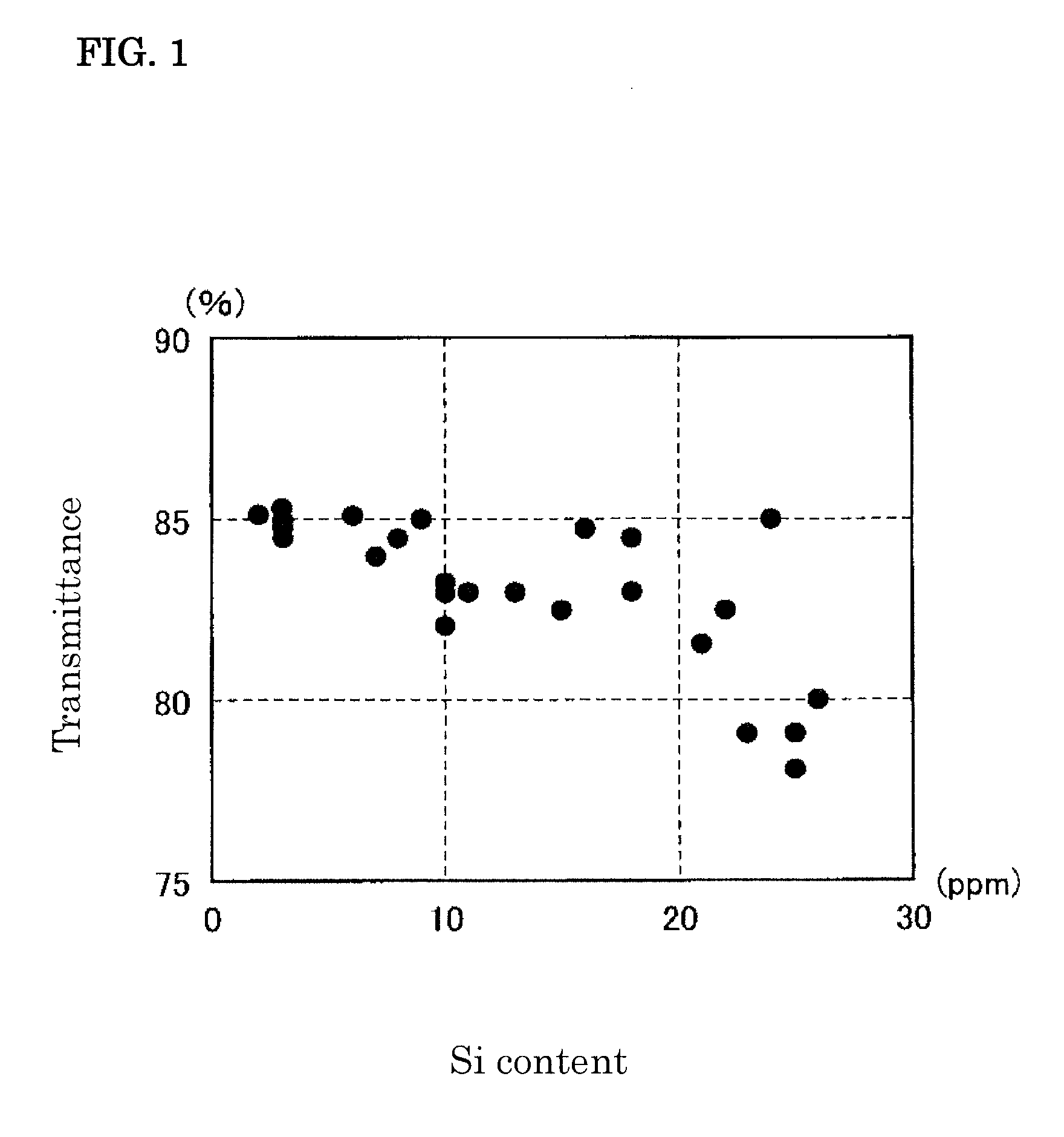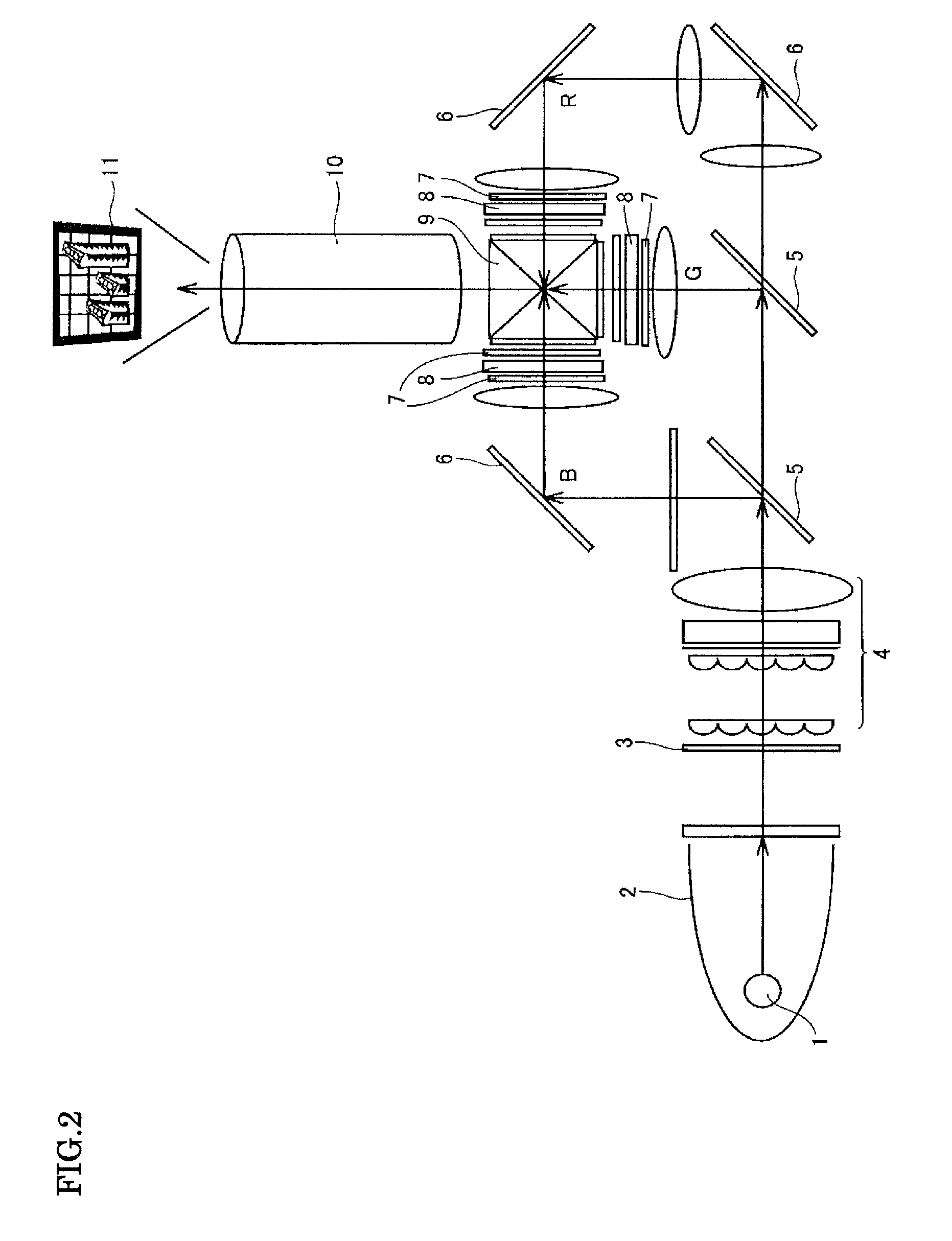Spinel sintered body, production method thereof, transparent substrate, and liquid crystal projector
a technology of liquid crystal projector and spinel, which is applied in the direction of optics, instruments, optical elements, etc., can solve the problems of in-line transmittance decreasing, difficult to use this spinel sintered body in the visible region, and difficult to achieve the effect of stable transmittance, low heat absorption, and high light transmission characteristics
- Summary
- Abstract
- Description
- Claims
- Application Information
AI Technical Summary
Benefits of technology
Problems solved by technology
Method used
Image
Examples
examples 1-7
[0042]In these examples, the Si element content in the raw material spinel powders was varied to be 50 ppm or less, and the light transmittance of the spinel sintered bodies following forming was investigated. Firstly, spinel powders having purities of 99.5 mass % and containing impurities at the levels shown in table 1 were formed and then processed by CIP into bodies having a diameter of 95 mm and a length of 95 mm. Next, a first sintering step was carried out at 1600° C. in a vacuum at 20 Pa while heated at 1° C. / min. The densities of the obtained sintered bodies were 95% to 97%.
[0043]The minimum thickness D from the central part of the sintered body to the outer edge thereof was 39 mm, and because the heating conditions in the first sintering step were 1° C. / min, the time “t” required to reach the maximum temperature of 1600° C. from 1000° C. was 600 minutes. Therefore, because D=a×t1 / 2, “a” was calculated to be 1.6, which satisfies the relationship 1≦a≦3.
[0044]Next, a second si...
examples 8-10
,
Reference Example 1
[0046]In these examples, the heating time “t” in the first sintering step was varied (D was fixed), and the relationship between the value of a, calculated from the relationship D=a×t1 / 2, and the Si element content and the light transmission characteristics of the sintered body was investigated.
[0047]Using the spinel powder used in Example 5, the value of a was altered as shown in table 2 by altering the heating time (t) without altering D in the first sintering step, and spinel sintered bodies were produced in the same way as in Example 5 in terms of other conditions. The measurements were carried out in the same way as in Example 5, with the Si element content of the sintered body formed in the first sintering step and the in-line transmittance of the sintered body following completion of the second sintering step being measured. The measurement results are shown in table 2.
TABLE 2Si elementIn-line transmittance (%)contentWavelengthWavelengtha(ppm)350 nm450 nmR...
PUM
| Property | Measurement | Unit |
|---|---|---|
| Temperature | aaaaa | aaaaa |
| Temperature | aaaaa | aaaaa |
| Temperature | aaaaa | aaaaa |
Abstract
Description
Claims
Application Information
 Login to View More
Login to View More - R&D
- Intellectual Property
- Life Sciences
- Materials
- Tech Scout
- Unparalleled Data Quality
- Higher Quality Content
- 60% Fewer Hallucinations
Browse by: Latest US Patents, China's latest patents, Technical Efficacy Thesaurus, Application Domain, Technology Topic, Popular Technical Reports.
© 2025 PatSnap. All rights reserved.Legal|Privacy policy|Modern Slavery Act Transparency Statement|Sitemap|About US| Contact US: help@patsnap.com



